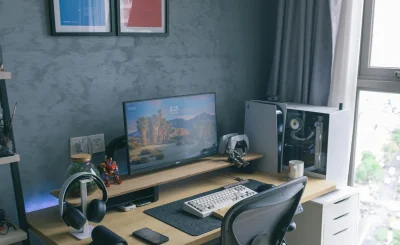Let’s be honest. The old way of doing e-commerce logistics—the massive, sprawling warehouses way out on the edge of town—is starting to creak under the pressure. Customers want their orders now, not in three to five business days. The “last mile,” that final and most expensive leg of the delivery journey, has become the entire battleground.
Enter the micro-fulfillment center, or MFC. Think of it not as a smaller warehouse, but as a hyper-localized, speed-obsessed command post tucked right inside a city, often in a retail store’s backroom or a repurposed urban facility. It’s the logistical equivalent of swapping a cargo ship for a fleet of nimble speedboats. This isn’t just a trend; it’s a fundamental rethinking of how we get products to people.
What Exactly is a Micro-Fulfillment Center? Breaking it Down
At its core, an MFC is a compact, highly automated facility designed for one thing: fulfilling online orders for rapid local delivery or pickup. The goal is proximity. By sitting closer to the end customer, MFCs slash delivery times and costs. They’re the engine behind services like “deliver in under two hours” or “buy online, pick up in-store” (BOPIS).
Here’s the deal: these centers are dense. They often use vertical space with tall, grid-based automated storage and retrieval systems (AS/RS). Picture a giant, robotic vending machine for inventory. This high-density design is key to their urban viability.
The Core Components of MFC Logistics
It’s not just a small room with some shelves. The logistics within an MFC are a carefully orchestrated dance of technology and process.
- Automated Storage and Retrieval Systems (AS/RS): This is the backbone. Robotic shuttles or bots zoom through a tall grid, fetching bins containing products and bringing them to a human or robotic picker. This eliminates most of the walking time that plagues traditional warehouses.
- Goods-to-Person (GTP) Technology: Instead of a person wandering a warehouse, the inventory comes to them. The AS/RS delivers the right bin to a stationary workstation, where an associate picks the specific item for the order. It’s faster, more accurate, and a lot less tiring.
- Warehouse Management System (WMS) & Order Management System (OMS): The brain of the operation. This software integrates with the e-commerce platform, receives orders, directs the robots, optimizes pick paths, and manages inventory in near real-time. It’s what makes the entire system sing in harmony.
- Last-Mile Integration: The MFC’s software is directly connected to local delivery services, couriers, or in-store pickup systems. The moment an order is packed, the system dispatches a driver or notifies the customer it’s ready.
Why Now? The Driving Forces Behind the MFC Boom
This shift isn’t happening in a vacuum. A few powerful currents have converged to make MFCs not just an option, but a necessity for many retailers.
| The “I Want It Now” Economy | Consumer expectations for speed have been permanently reset. Same-day, even two-hour delivery, is becoming a standard offering, not a luxury. |
| The Last-Mile Cost Crisis | That final delivery can account for over 50% of the total shipping cost. By starting the journey closer to the customer, MFCs dramatically cut this expense. |
| Urbanization and Real Estate | As more people live in cities, it makes sense to place inventory there. But real estate is expensive. MFCs, with their vertical design, make the most of small, costly footprints. |
| The Rise of BOPIS and Curbside | The pandemic cemented buy-online-pickup-in-store as a dominant channel. MFCs turn retail stores into efficient fulfillment hubs, blending online and offline retail—what we call omnichannel fulfillment. |
The Tangible Benefits: More Than Just Speed
Sure, speed is the flashy benefit. But the advantages of a well-oiled micro-fulfillment logistics operation run much deeper.
Drastically Reduced Fulfillment Costs. By automating the most labor-intensive part—picking—and cutting last-mile distance, the cost per order can plummet. You’re saving on labor, transportation, and even packaging.
Superior Inventory Accuracy. The WMS and automated systems know the location of every single item in near real-time. This means fewer stockouts, less overstocking, and a much happier CFO.
Resilience and Scalability. Relying on a single, massive distribution center is a risk. A network of MFCs is more resilient. If one has an issue, others can pick up the slack. And scaling up? You just add another node to the network.
Sustainability Wins. Shorter delivery routes mean fewer miles driven, which translates to a smaller carbon footprint. It’s a win for the bottom line and, honestly, for brand perception.
The Flip Side: Challenges and Considerations
It’s not all robotic smooth sailing. Implementing a micro-fulfillment strategy comes with its own set of hurdles.
High Initial Investment. The automation technology—the robots, the software, the installation—isn’t cheap. This can be a significant barrier to entry for smaller players.
SKU Limitations. MFCs are brilliant for high-turnover, predictable items. But they aren’t designed for a massive, long-tail catalog of 100,000+ slow-moving SKUs. You have to be strategic about what inventory you place where.
Operational Complexity. You’re managing a distributed network, not a single source. This requires sophisticated software and logistics expertise to balance inventory across all locations seamlessly.
Labor Shifts. While MFCs reduce the need for manual pickers, they create demand for new roles: technicians to maintain the robotics, data analysts, and system operators. It’s a different kind of workforce.
Is an MFC Right for Your Business? A Quick Checklist
- Do you have a high volume of online orders concentrated in urban areas?
- Is your product catalog skewed towards fast-moving consumer goods, groceries, or popular retail items?
- Are you feeling the pinch of rising last-mile delivery costs?
- Do you have existing retail locations that could be retrofitted?
- Is speed a key competitive differentiator for your brand?
If you answered “yes” to most of these, the MFC model is worth a very serious look.
The Future is Distributed, Not Centralized
So, where is this all heading? The future of e-commerce logistics isn’t a bigger warehouse; it’s a smarter, more responsive network. We’re moving towards a world where inventory lives just around the corner, not in another state.
We’ll see more dark stores—retail spaces converted to local fulfillment-only centers. We’ll see AI getting even better at predicting demand down to the neighborhood level, telling you exactly which products to stock in which micro-fulfillment center. The line between “store” and “warehouse” will completely blur until they are one and the same.
The race to the customer’s doorstep is over. The winner will be the one who never had to race very far at all. The question is no longer about how fast you can ship from a distance, but how close you can be before the order is even placed.








